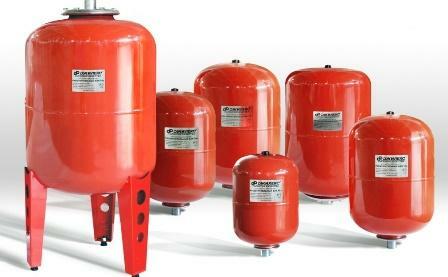 The boiler and pipes can be protected using the expansion tank. The operation of the heating system is often associated with extreme pressure increases, the presence of hydraulic shocks. All this can lead to the destruction of expensive equipment, the rapid deterioration of key elements of the system( such as, for example, a boiler).In order to protect the heating system use special compensating tanks. What are these, what types of tanks exist, and how to pick up the device - read below.
The boiler and pipes can be protected using the expansion tank. The operation of the heating system is often associated with extreme pressure increases, the presence of hydraulic shocks. All this can lead to the destruction of expensive equipment, the rapid deterioration of key elements of the system( such as, for example, a boiler).In order to protect the heating system use special compensating tanks. What are these, what types of tanks exist, and how to pick up the device - read below.
-
- What is the expansion tank used for
- What features does the expansion tank for open type
- What is the difference in the expansion tank for closed type heating
- Choosing the expansion tanks for the closed heating system
- Calculating the expansionA tank for a closed heating system
- Calculate the volume of the expansion tank for a closed heating system
- How to choose an expansion tank for heating( video)
Expansion tank for
Expansion tank is one of the most important elements of the heating system, which helps to extend its service life. The absence of this element in heating systems can lead to pipe rupture, breakage of cranes and other components. The compensation tank copes with several important tasks.
So, the expansion tank is needed to compensate for the thermal expansion of the coolant in the system.
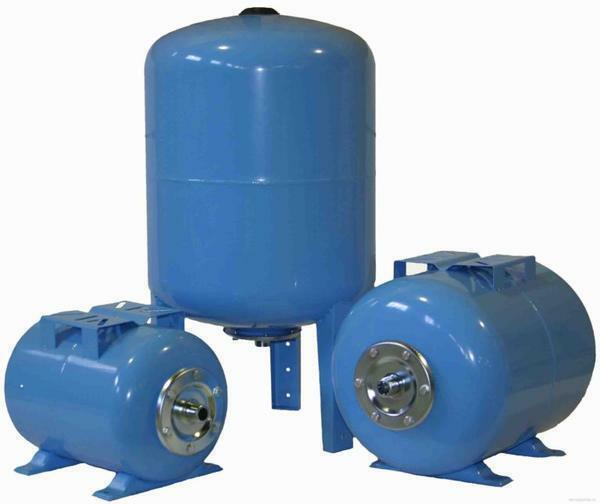 The expansion tank helps not only to protect the pipes from rupturing, but also extends the life of the heating system
The expansion tank helps not only to protect the pipes from rupturing, but also extends the life of the heating system
The heating expansion is typical for all liquids and materials. The volume of the heat carrier due to the temperature expansion can be doubled. This, in turn, increases the pressure in the heating system. The expansion device, in this case, pushes out the coolant, leveling the pressure.
In addition, the expansion vessel serves to protect the system from the harmful effects of hydraulic shocks.
This is due to the fact that the pump can be turned off and on. At the same time, the pressure in the system rises sharply, which can lead to a hydraulic shock. The expansion tank, in turn, compensates for this blow.
Expansion tanks are well suited for installation in systems:
- Autonomous heating;
- Closed loop;
- Heating, running on solar cells or heat pumps;
- Independent systems connected to central heating.
There are several types of expanders that are suitable for a particular type of system. You can also make a tank yourself. Some craftsmen have adapted to a homemade tank receiver.
What are the features of the
open type expansion tank? The open expansion tank is simple: it is a simple reservoir with a cover on top. This design is rarely used in heating systems. This is due to the lack of tightness of the tank: water can be added to the system by opening the top cover of the tank. At the same time, air enters the system, which leads to the formation of rust in it. In addition, due to evaporation, there is a large loss of the coolant.
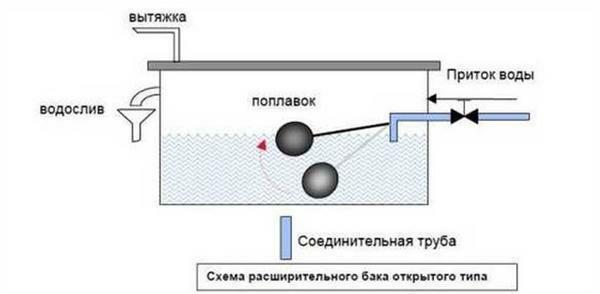 The advantage of the expansion tank for heating is to protect the system from dust and various debris.
The advantage of the expansion tank for heating is to protect the system from dust and various debris.
However, the installation of such a tank can solve many problems:
- Allows you to remove excess air from the system;
- Protects the system from getting into debris, dust.
Set the open type tank at the highest point of the circuit. It is possible to arrange the tank on the return: this will reduce the heat loss and abundant evaporation of the coolant. But, in this case, it is necessary to provide a design for water drainage: when the pressure is increased, water will be pushed out through the tank lid, flooding the floor and everything that is located in the radius of the device. If water is diverted to a special container, this will significantly reduce heat carrier losses.
What is the difference between the expansion tank for closed type heating
A closed device is a sealed tank made of steel with an inner rubber partition. One part of the tank is removed for filling with water, and the second - with nitrogen or air. When the pressure rises( when the coolant is heated), the rubber septum is stretched, and water is pushed into the part with air. To understand how the tank works, the scheme of its structure in the section can help.
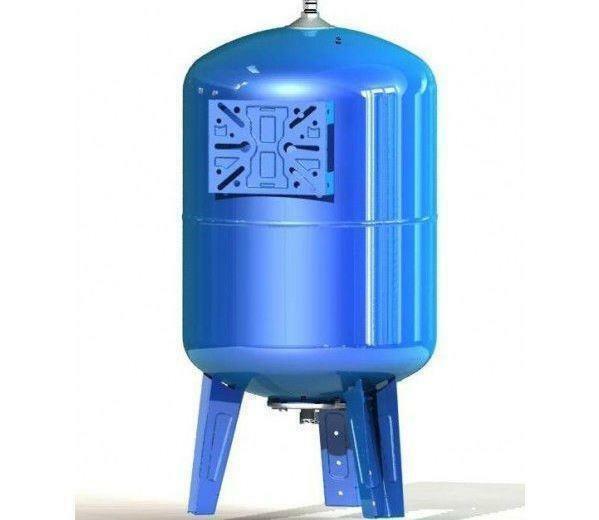 The membrane compensation tank
The membrane compensation tank
is quite popular and in demand today
Depending on the membrane type, the closed tanks are divided into the following types:
- Baloon;
- Diaphragm.
A membrane closed-type compensation tank with a balloon wall is considered more reliable. It has a larger volume. The septum in the form of a diaphragm, in case of its wear, can not be replaced.
In heating systems, the diaphragm tank can perform the following functions:
- Allows the system to be more flexible and easily manageable;
- Prevents the ingress of air into the system and its spread through the pipes( protects the pipes from rust formation);
- Provides minimum heat loss;
In addition, the repair of the balloon diaphragm tank can be easily carried out by hand.
We select the expansion tanks for the closed type
Compensation tank should be selected taking into account the quality of the metal, the stability of the device to penetrate one substance into another, the type of membrane and the possibility of replacing it, the range of operating temperatures, the estimated service life of the device( indicative of thisThe warranty period may be from the manufacturer).
 You can familiarize yourself with the expansion tanks for the heating system yourself
You can familiarize yourself with the expansion tanks for the heating system yourself
In order to select a high-quality and efficient tank, you must follow these recommendations:
- It is better to choose membrane systems that are reliable, efficiently manageWith their tasks and are subject to repair.
- To manufacture the membrane, natural butyl rubber or ethylene-propylene rubber should be used.
- If the tank is to be connected to a centralized heating system, the membrane must be more resistant to high temperatures and damage.
- For the autonomous heating system of a private house, tanks with an elastic membrane are suitable.
- If the tank is to be used not only as a device for protecting the heating system, but also for water supply, the membrane must be made of food grade rubber( usually such tanks are painted in blue).
Before buying the tank, make sure that the calculated pressure values in the boiler and the compensator match, check whether the membrane meets the quality standards and hygienic standards. You can make a selection with the help of a consultant in the store, clearly formulating your requirements.
Calculation of the expansion tank for the closed heating system
Calculation of the compensating tank for the heating system is done in order to determine its volume. It depends on this how well the device will handle with the tasks assigned to it. In addition, in addition to the volume, calculate the minimum diameter of the pipeline for connecting the device, the levels of the initial operating pressure in the system. The technology of calculating the tanks is quite complex, and has many nuances.
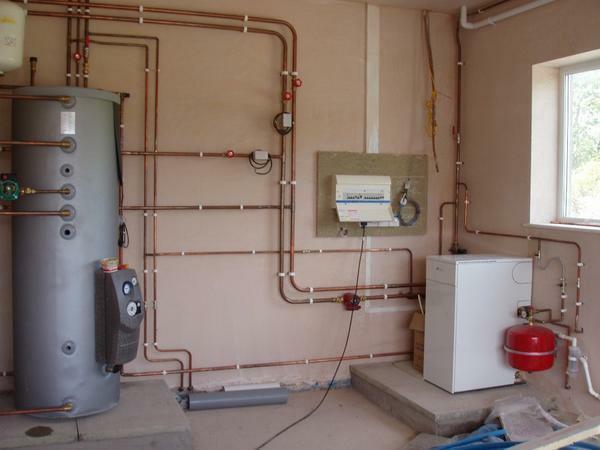 Before selecting an expansion tank for the heating system, many specialists recommend that
Before selecting an expansion tank for the heating system, many specialists recommend that
be calculated correctly. Therefore, in the calculations, this correlation between the tank volume and the system performance should be observed:
- The higher the maximum temperature exponents of the coolant, the larger the tank size;
- If the heating circuit accommodates a large volume, then the compensation tank needs a large one;
- The higher the operating pressure in the system, the less the tank is needed;
- The smaller the distance from the instrument mounting point to the highest point in the system, the smaller the tank is needed.
There are many methods and formulas for calculating tank sizes.
Calculate the volume of the expansion tank for the closed heating system
The volume of the compensation tank is one tenth of the volume of the coolant in the heating circuit. According to some reports, the volume of the tank for a system with water is 15% of the volume of the coolant, with an antifreeze of 20%.As a rough calculation, you can take every fifteen liters of tank for every 1000 watts of boiler thermal output. Calculate the size of the tank can be more detailed.
 In order to correctly calculate the volume of the expansion tank for a closed heating system, it is better to seek assistance from
In order to correctly calculate the volume of the expansion tank for a closed heating system, it is better to seek assistance from
. For this you need to know a number of factors such as:
- Temperature range in which the system will operate;
- The volume of the coolant in the system;
- Degree of increase of the heat carrier in volumes;
- Height of the tank in the system;
- The degree of reservoir reserve( an average of 1.2%).
Degree of expansion of the heat carrier can be found in the physical tables: it is constant, and depends on the temperature range. The volume of the tank will be equal to the product of the volume of the expandable liquid and the volume of the reserve. In addition, you can find the volume and using special online calculators. It should be remembered that the value obtained is an approximate value. Choosing a tank by volume is better with a margin.
If, after installing the reservoir, the pressure in the system is reset too often, it means that you have miscalculated with the tank volume, taking less than what was intended.
It is not necessary to change the vacuum expander for heating. To solve the problem, you will need to purchase another, a small device, and connect it in parallel.
How to choose an expansion tank for heating( video)
Expansion or compensation tank is an important element of any heating system, which protects pipes from rupture, boilers, cranes and other components from breakage. Installing the tank will allow you to maximize the wear and tear of the system. The choice of the tank depends on the volume of the coolant in the system, technical and operational characteristics, such as a compensating device. Use our recommendations and you will be able to choose the best quality and effective device!


